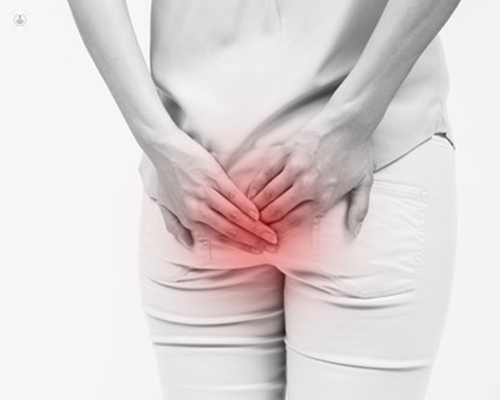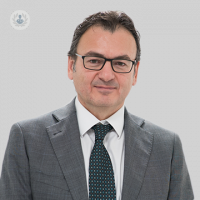Haemorrhoids: causes, symptoms and treatments
Autore:Haemorrhoids are anatomical features that everyone has, but sometimes they can present symptoms that require treatment. A leading colorectal surgeon, Mr Pasquale Giordano, sheds some light on what haemorrhoids are, symptoms to look out for and treatment options available.

What are haemorrhoids?
Haemorrhoids are normal anatomical structures that we all have. These anatomical structures are made mostly of special vascular tissue which sit on the top of the anal canal. The reason we all have haemorrhoids is because they play an important role in the mechanism of continence. This vascular tissue can inflate and deflate contributing to the fine closure of the anal canal. Only when these normal anatomical structure become abnormal - if they increase in size or become congested, they start producing symptoms and this is what we call haemorrhoidal disease which should not be confused with haemorrhoids.
What causes haemorrhoids?
Haemorrhoids become abnormal when they become swollen and inflated over their normal limits. The reasons why they become abnormal can be different. Anything that can cause a prolonged increase in pressure inside the abdomen which leads to an obstructed and odd flow of blood to the haemorrhoids can, in time, lead to abnormal haemorrhoids. Simple things like chronic constipation and spending too long sitting on the toilet trying to defecate can certainly contribute to the formation of haemorrhoids. There are also other relatively common things like pregnancy that can also lead to the same problem.
Patients may be predisposed more than others to this condition and in those cases simply standing up for a prolonged time or strenuous physical exercise may contribute to the development of abnormal pathological haemorrhoids.
What are the symptoms of haemorrhoids?
Haemorrhoids only become symptomatic when they become abnormal. By far the most common symptom of haemorrhoids will be rectal bleeding. The bleeding normally consists of bright red blood occurring after defecation and is not associated with any pain. In general, pain is not a common symptom of haemorrhoids.
For more advanced stages of haemorrhoids, when they become bigger or more swollen, they start prolapsing as well, which means they start protruding through the anus. This normally occurs after defecation. In the initial stages of symptomatic haemorrhoids, normally the prolapse reduces spontaneously.
For more advanced stages, prolapsing may become more frequent occurring spontaneously and not necessarily associated with defecation. Sometimes, advanced stages of haemorrhoids, the haemorrhoids might be protruding for most of the time.
Discharge and discomfort can also be a consequence of haemorrhoids, especially when they are large and protruding regularly. Severe pain only occurs only when the haemorrhoids become thrombosed which means they have become very big with a large blood clot in it.
How are haemorrhoids treated?
Haemorrhoids in the early stages will respond to conservative measures and will not require surgical intervention. A surgical intervention remains the most effective treatment for more advanced stages. Treatments like injection sclerotherapy and rubber band ligation can also be considered, although these will only offer temporary relief and will have to be repeated several times to keep symptoms under control.
For more advanced haemorrhoids, the most effective treatment is surgery. Conventional surgery involves the excision of the haemorrhoids. This will leave the patient with three large, open wounds which may need several weeks to completely heal. As a result, recovery can be prolonged with some pain and discomfort.
More modern surgical treatments of haemorrhoids involve a technique called transanal haemorrhoidal dearterialisation (THD) which I pioneered in this country and started offering to my patients back in 2002. This operation does not involve any excisions or removal of tissue. Its aim is to correct the haemorrhoids, preserving their anatomical structure and the role that they play in the mechanism of continence.
The procedure consists of isolating one by one all of the blood vessels feeding the haemorrhoids and applying a number of sutures to reduce the main blood flow to the haemorrhoids. This allows the haemorrhoids to shrink and go back to their original size and shape. For the largest haemorrhoids, particularly those with a more significant prolapse, I introduce another stitch which aims to lift and fix the haemorrhoids to where they belong to prevent further sliding of the haemorrhoids and therefore eliminating the prolapse as well. As the place where the sutures are positioned is not very sensitive to pain, normally the operation has minimal post-operative pain, with a quick recovery and very, very low morbidity.
If you think you might be suffering from haemorrhoidal symptoms, or would like to find out more, make an appointment with a specialist.


